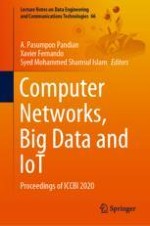This book presents best selected research papers presented at the International Conference on Computer Networks, Big Data and IoT (ICCBI 2020), organized by Vaigai College Engineering, Madurai, Tamil Nadu, India, during 15–16 December 2020. The book covers original papers on computer networks, network protocols and wireless networks, data communication technologies and network security. The book is a valuable resource and reference for researchers, instructors, students, scientists, engineers, managers and industry practitioners in those important areas.
